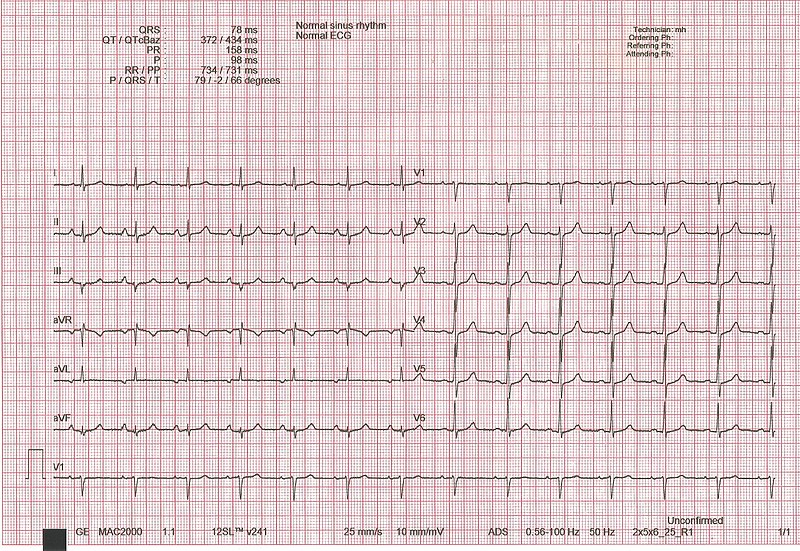Playlist
Show Playlist
Hide Playlist
ECG Case: 22-year-old Man with Anterior Chest Pain
-
Slides Learning to Read an ECG.pdf
-
Reference List Electrocardiogram (ECG) Interpretation.pdf
-
Download Lecture Overview
00:01 Well, we've covered a lot of important definition material and you may need to repeat this lecture a couple of times to make sure you have all of the numbers down or you may have taken notes on that so you remember. 00:13 Once you start reading ECGs, it'll become easy to remember what the various intervals should be. 00:19 Oh, the PR needs to be less than 5 little boxes, and so forth. Let's do a case. 00:24 Okay. Here's a 22-year-old male student who's the captain of the university boxing team and he comes in to you because he's having anterior, that is chest -- pain in the front of his chest. 00:35 The discomfort occurs several times each day and lasts for 1 to 2 hours. 00:40 On physical exam, he's very tender when you touch the sternum and he did admit that during a number of boxing matches recently, he took a number of hits on the sternum. 00:50 By the way, what are the important points here? Number one, chest pain. 00:54 That's why he was referred. Number two, there's a history of some thoracic trauma and here is the ECG. 01:00 So, it's a normal ECG. It's the one I showed you before. 01:05 So that's very reassuring because what we were worried about - well, we worried that maybe you know, he'd gotten some injury to the blood vessels in the heart and maybe he had a heart attack during one of these episodes. 01:18 So, the patient's chest pain is musculoskeletal in origin. 01:22 It's the result of the trauma that he suffered when he was boxing and you can reassure the patient it'll get better with time. 01:29 Treatment: you can give some non-steroidal, anti-inflammatory agent such as Naprosyn and reassurance and no further testing is required.
About the Lecture
The lecture ECG Case: 22-year-old Man with Anterior Chest Pain by Joseph Alpert, MD is from the course Electrocardiogram (ECG) Interpretation.
Included Quiz Questions
A 22-year-old man presents to the emergency department with anterior chest pain. He is the captain of his university boxing team. The chest discomfort occurs several times each day and lasts for 1-2 hours. On physical exam, his sternal area is tender, and he admits to receiving several blows there during a recent boxing match. His ECG is unremarkable. Which of the following statements regarding this case is false?
- There is still a suspicion of myocardial infarction.
- The patient's chest pain is musculoskeletal in origin.
- Treatment for this patient would include nonsteroidal anti-inflammatory drugs.
- Thoracic trauma can lead to myocardial infarction.
- The patient’s condition is likely to improve with time.
Customer reviews
5,0 of 5 stars
| 5 Stars |
|
5 |
| 4 Stars |
|
0 |
| 3 Stars |
|
0 |
| 2 Stars |
|
0 |
| 1 Star |
|
0 |




